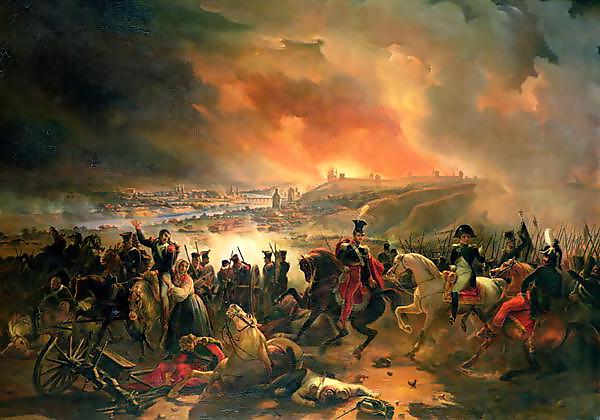The battle of Borodino is one of the greatest and most famous battles in the history of mankind. The Russian army has shown heroism, which has been admired for more than two centuries. One of the most strategically important points on the field during the Battle of Borodino was Raevsky’s battery, so the French made great efforts to capture it.
Raevsky’s battery is a hill on Borodinsky
a field from which Russian positions to the west and east were very well seen, from the New Smolensk road to the
Bagration flushes.18 guns were located on the mound itself, several also stood on its sides. Few guns remained on the hill itself, the rest were in the phalanges behind. The defense of the hill was led by Lieutenant General Nikolai Raevsky, commander of the seventh infantry regiment.
Raevsky’s battery (Tolstoy’s “War and Peace”)
A description of the battle itself is devoted to several chapters. Pierre Bezukhov never served in the army and had absolutely no idea what it was. But he came to the front out of a sense of patriotism and a desire not so much to fight and kill enemies, but to feel himself a participant in such a grandiose battle, which is so significant for his homeland.
Pierre on Raevsky’s battery really gets to know the war. At first he observes from the side, not understanding anything and feeling as if at ease, but then Pierre captures an unusual sight.
Raevsky’s battery was also called the “key of the Borodino position”, because after its capture the defense of the Russian army was much more complicated. The French occupied the village of Borodino for about six hours, put up heavy artillery guns in the southeast and began shelling the Raevsky battery from the flanks.
The first attempt to take the position of "Raevsky Battery" was made by the French infantry at about 9 a.m. At first, two divisions swiftly approached from the west. The Russians fired their cannons from their positions, but when the enemy was 100 paces away, the order was given to shoot, and the French ranks began to thin out faster and faster. Soon the enemy could not stand it and ran.
At about 10 a.m., the French made a second attempt to occupy the Raevsky battery. By that time, the Russian reserve troops approached , and the situation of the Bagration flushes improved. The second attack involved the division of General Moran, who quickly advanced forward and managed to hide in thick powder smoke before being shot by the Russians. Suddenly, the Moran’s division swiftly stepped through the parapet and captured Raevsky’s battery. But the Russians, under the command of the sent general Yermolov, again forced the French to flee.

Both the Russians and the French suffered significant losses. Only at the first hour of the day, having installed a fair amount of artillery on the Bagration flushes, the French decided on a third attack. This time, 6 divisions attacked the Raevsky battery. The cavalry went on the offensive both from the front and from the rear of the battery. But the Russian horse troops behind the infantry repelled these attacks. Then the French went infantry at once from all sides. A hot battle ensued. It was attended by Barclay de Tolly and the seriously ill general Likhachev. The French suffered heavy losses, but nevertheless at the beginning of the 5th hour they captured Raevsky’s battery, and the Russians were forced to retreat to the Kutuzov borders.